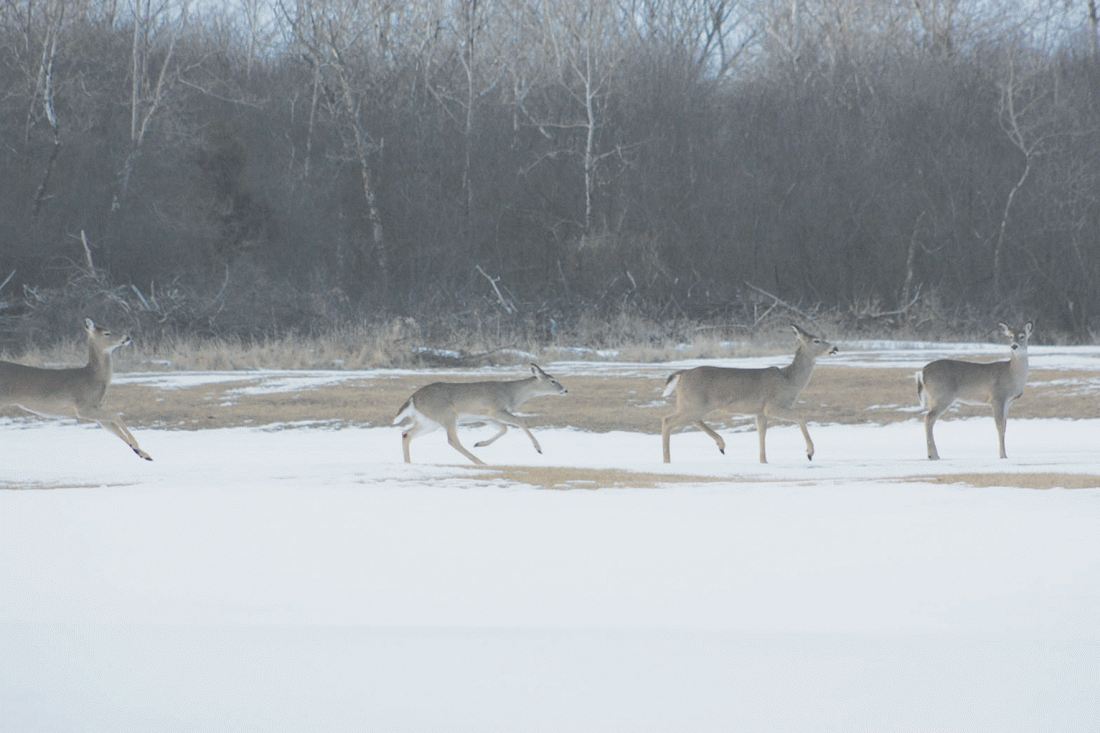U.P. deer herd fared well over winter

Daily Press file photo Deer play in a field in Delta County. According to Department of Natural Resources officials, the U.P. deer herd did well over the winter.
ESCANABA — Thanks to relatively mild winter weather in the Upper Peninsula, Michigan Department of Natural Resources (DNR) Wildlife Technician Colter Lubben said the department is optimistic about the area’s deer population this year.
According to Lubben, the region actually had significant snow cover for more days than it normally does during the winter of 2019-20.
“This year, we had 122 days with an average of more than 12 inches of snow on the ground in the U.P.,” he said.
From 2004 to 2018, the U.P. has had an average of 80 days with more than 12 inches of snow.
However, Lubben said snow depths are not the most important factor in determining over-winter survival rates for deer.
“Yes, we know that deep snow affects deer negatively, but the biggest factor in mortality rates in whitetail deer in winter is … the longevity of winter,” he said.
Lubben said the winter of 2019-20 was not extended, and no major snowfall events were observed late in the season.
“We should see, and we have seen, good survival rates of deer through the winter,” he said.
As extended periods of very cold weather can increase deer mortality rates, the above-average temperatures recorded in the U.P. during the winter may have also helped.
Mortality rates among adult deer the DNR tracked with GPS collars this winter were very low. Lubben noted no fawns — which are at the highest risk of death during the winter — were being tracked with these collars.
Along with deer survival rates, Lubben said winter weather can have an effect on birth rates for adult does. Mid-May to mid-June is the peak birthing time for whitetail deer in the area.
“We kind of have to see what the birth rates are going to be and what fawn survival is going to look like,” Lubben said.
The DNR will have more information about this later in the year.
“We look at our fawn rates through hunter observation in the fall,” Lubben said.
On a related note, Lubben said the DNR has been getting a large number of calls lately from people who believe they have found abandoned fawns. He encouraged people in this situation not to intervene.
Lubben said newborn whitetail fawns are nearly scentless, which protects them from predators. Because of this, their mothers leave them for up to eight hours on a regular basis, as being near their offspring for too long could put them at risk.
Being in direct contact with humans can put fawns in danger for the same reason.
“Don’t touch and don’t move fawns,” Lubben said.



